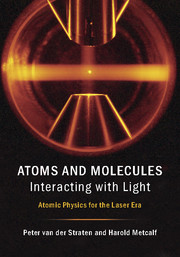Optical Polarization of Molecules
This book explains the theory and methods by which gas molecules can be polarized by light, a subject of considerable importance for what it tells us about the electronic structure of molecules and properties of chemical reactions. Starting with a brief review of molecular angular momentum, the text goes on to consider resonant absorption, fluorescence, photodissociation and photoionization, as well as collisions and static fields. A variety of macroscopic effects are considered, among them angular distribution and the polarization of emitted light, ground state depopulation, laser-induced dichroism, the effect of collisions and external magnetic and electric field effects. Most examples in the book are for diatomic molecules, but symmetric-top polyatomic molecules are also included. The book concludes with a short appendix of essential formulae, tables for vector calculus, spherical functions, Wigner rotation matrices, Clebsch-Gordan coefficients, and methods for expansion over irreducible tensors.
- Includes essential formulae, tables and functions in an easy to use appendix
- Many examples are included to explain the key concepts
- Up-to-date and concise overview of all the latest research
Reviews & endorsements
'This volume has very thoroughly been prepared and edited. 405 literature citations … and a well prepared subject index complete the work which is worth its price.' U.-W. Grummt, Zeitschrift für Physicalische Chemie
Product details
June 2005Paperback
9780521673440
324 pages
245 × 171 × 18 mm
0.525kg
90 b/w illus. 30 tables
Available
Table of Contents
- 1. Angular momentum and transition dipole moment
- 2. Excited state angular momenta distribution
- 3. Ground state angular momenta polarization
- 4. Effect of external magnetic field on angular momenta distribution
- 5. General equations of motion for arbitrary J values
- 6. Other methods of alignment and orientation of molecules
- Appendix
- References
- Index.






